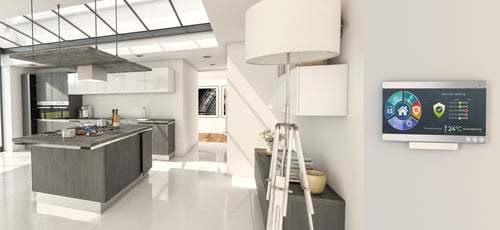Author: Editorial board

HVAC systems and their application
Heating, ventilation and air conditioning systems are commonly grouped under a single acronym, HVAC. However, they rely on different types of equipment, applications and principles to function properly and to ensure thermal comfort in different facilities.
HVAC equipment is one of the main sources of electricity dissipation, which is why it is one of the first elements to be considered when designing a building, whether industrial or residential. The construction of HVAC systems must guarantee high-quality standards in order to respond to the growing awareness of energy-saving issues and environmental sustainability, as well as comply with the provisions of current energy efficiency regulations.
What exactly do we mean by HVAC systems? In this article, we'll take a closer look at this topic and the different types of HVAC systems.
If you are an HVAC professional, click on the button below and download the free infographic to find out more about the heating and air conditioning trends of the future.
What are HVAC systems?
An HVAC system is a set of complex, skilfully designed systems for managing heating, air conditioning, air ventilation and even refrigeration if we refer specifically to the acronym HVAC-R. HVAC systems are based on the creation of a series of software and hardware devices and components which, together, manage the environmental comfort of an entire building or limited environment.
Engineers who design such systems also have specific skills in energy saving: designing HVAC systems today means designing energy-efficient solutions that optimise running costs by reducing waste.

The different types of systems: domestic and industrial
HVAC systems are designed according to the type of building they are intended for: it can be a large system for industrial and commercial buildings (such as factories and companies) or a solution for residential structures (such as offices, hotels or the home environment). In any case, the design is aimed at satisfying the thermal comfort of the occupants by heating or cooling the air, depending on external conditions. The choice of HVAC system is made not only on the basis of the intended use of the system but also takes into account a number of factors including: the conformation and structure of the building, the budget and the architectural design of the environment.
By integrating engineering development and design, the new equipment found in HVAC systems focuses on high efficiency and distinctive aesthetics that meet new market demands. In addition, the latest HVAC solutions imply benefits in terms of energy savings, which can be achieved through the use of the most advanced technologies. Smart technological systems are gaining ground, especially in the residential sector, with a proliferation of temperature control proposals with smart thermostats and chronothermostats.
Within the design of technological HVAC systems, there is also room for the study of an aesthetic lighting component that can contribute to the definition of the layout of state-of-the-art equipment. SLIM's R&D department works side by side with technicians and designers in the HVAC sector to develop customised lighting solutions.
Are you looking for light signalling for HVAC equipment?
SLIM is the right contact, click on the button below, we will be happy to answer your questions and discuss a possible prototyping proposal.

